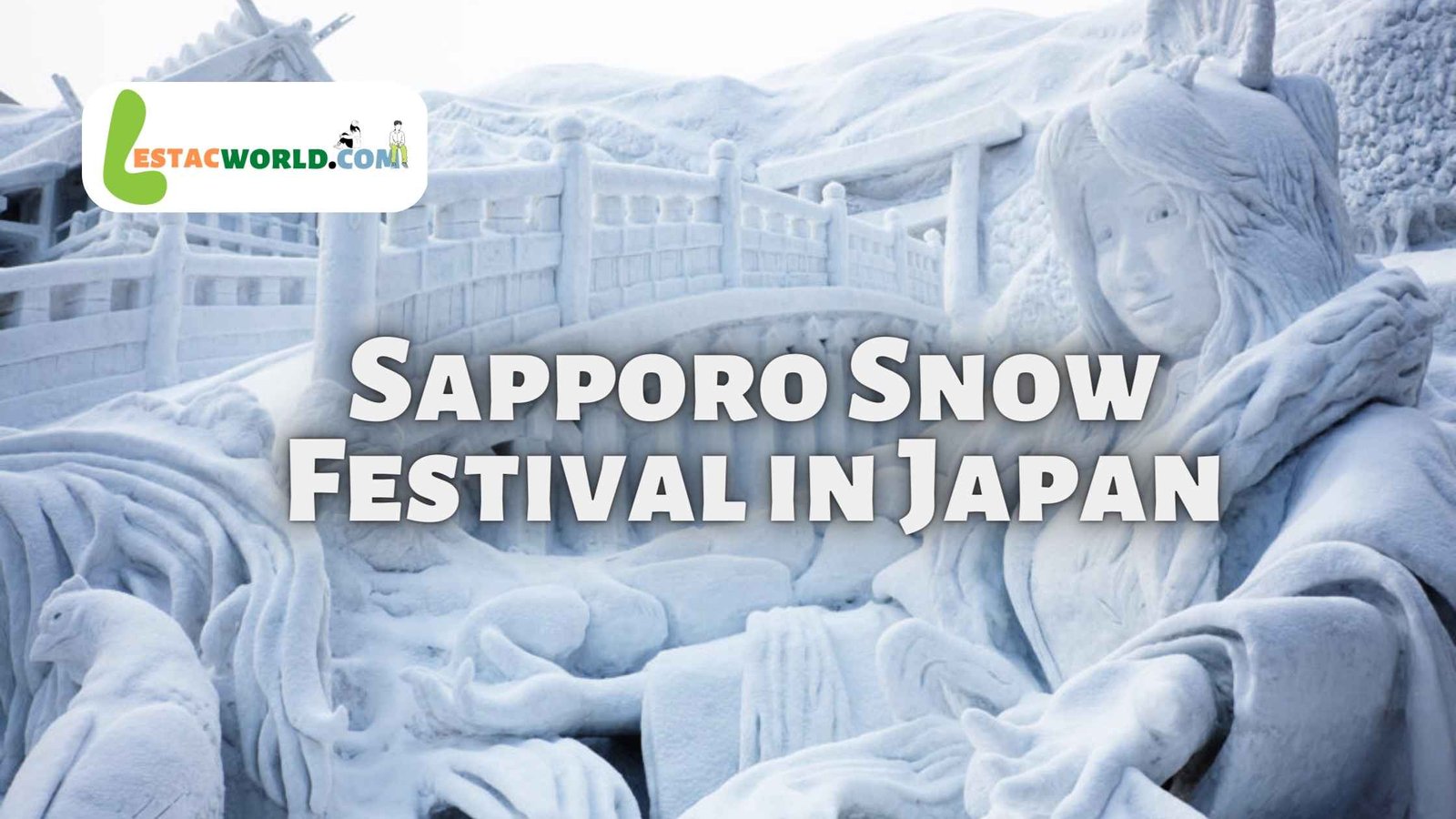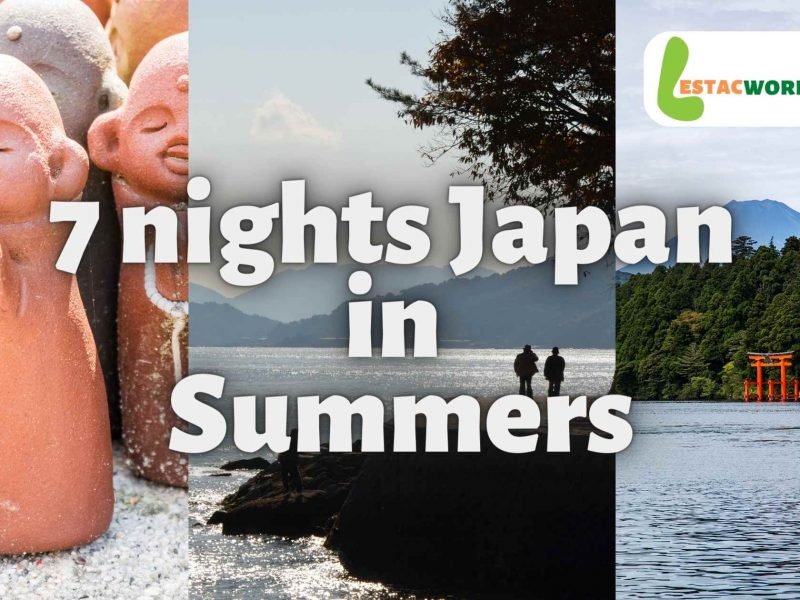About Sapporo Snow Festival in Japan
Important to know about Sapporo Snow Festival in Japan-The Sapporo Snow Festival is held every winter in Sapporo, which is the capital city of Hokkaido, Japan’s northernmost prefecture. Every year, millions of people from all over the world come to the festival, which is one of the biggest winter events in Japan.
In 1950, a group of high school students built six snow statues in Odori Park. This was the start of the festival. Since then, the festival has grown into a huge event with hundreds of snow and ice sculptures that draw both tourists and locals.
The festival usually takes place at the beginning of February and lasts for about a week. The snow and ice sculptures that are set up all over the city, like in Odori Park, Susukino, and Tsudome, are the main attraction of the festival. The sculptures range from small, complex designs to huge pieces that can be up to 15 metres tall.
In addition to the snow and ice sculptures, the festival has concerts, ice skating, snowboarding, and food stands with traditional Hokkaido food.
The Sapporo Snow Festival is a popular winter event in Japan. It’s a great way to learn about Japanese culture and have fun in the winter.
Facts about Sapporo Snow Festival in Japan
Here are some interesting facts about the Sapporo Snow Festival:
- The festival is one of the largest winter events in the world, attracting over 2 million visitors every year.
- The festival started in 1950 when a group of local high school students made six snow sculptures in Odori Park.
- The festival features hundreds of snow and ice sculptures, some of which can be as tall as a multi-story building.
- The sculptures are created by both local and international artists, and it takes about a month to complete them.
- The festival also includes a variety of events and activities, such as ice skating, snowboarding, and food stalls serving traditional Hokkaido cuisine.
- The festival has been cancelled a few times over the years due to weather conditions, volcanic eruptions, and other unforeseen circumstances.
- The festival has become a major tourist attraction, and it generates significant economic benefits for the city of Sapporo and the surrounding region.
- The festival is held in early February, during the coldest time of the year in Hokkaido.
- The festival has a different theme every year, and the sculptures are designed to reflect that theme.
- The festival is a celebration of Hokkaido’s winter culture and traditions, and it has become an important part of the region’s identity.
What are do's and Dont's at Sapporo Snow Festival in Japan
Here are some do’s and don’ts to keep in mind when visiting the Sapporo Snow Festival in Japan:
Do’s:
- Dress warmly: The festival is held during the coldest time of the year in Hokkaido, so make sure to wear warm clothing and layers.
- Try the local food: The festival is a great opportunity to try traditional Hokkaido cuisine, such as seafood and ramen.
- Respect the sculptures: The snow and ice sculptures are works of art, so please respect them and don’t climb on them or touch them without permission.
- Take photos: The sculptures are beautiful, and taking photos is a great way to capture your memories of the festival.
- Be polite: Japanese culture values politeness and respect, so be sure to show respect to the locals and other visitors.
Don’ts:
- Litter: Please dispose of your trash properly and help keep the festival grounds clean.
- Smoke: Smoking is not allowed in the festival area, except in designated smoking areas.
- Bring pets: Pets are not allowed in the festival area, except for guide dogs and service animals.
- Cause a disturbance: The festival is a family-friendly event, so please be mindful of your behavior and avoid causing a disturbance.
- Drink too much: Alcohol consumption is allowed in the festival area, but please drink responsibly and avoid excessive drinking.
By following these do’s and don’ts, you can have a safe and enjoyable experience at the Sapporo Snow Festival while respecting the local culture and customs.
History time line of Sapporo Snow Festival
Here is a brief history timeline of the Sapporo Snow Festival:
- 1950: The first Sapporo Snow Festival was held in Odori Park with just six snow sculptures made by local high school students.
- 1955: The festival was cancelled due to a lack of snowfall.
- 1959: The festival was held for 10 days for the first time.
- 1965: The festival was held in commemoration of the 100th anniversary of the founding of Sapporo.
- 1972: The festival was cancelled due to the effects of the Vietnam War.
- 1980: The festival was cancelled due to a lack of snowfall.
- 1996: The festival was cancelled due to the eruption of Mount Usu.
- 2000: The festival was held in commemoration of the 30th anniversary of the normalization of diplomatic relations between Japan and South Korea, and a South Korean ice sculpture team participated for the first time.
- 2010: The festival celebrated its 60th anniversary, and the theme was “Journey.”
- 2014: The festival set a record for the number of visitors with over 2.4 million people attending.
- 2021: The festival was cancelled due to the COVID-19 pandemic.
Despite some cancellations over the years, the Sapporo Snow Festival has continued to grow and evolve into one of the biggest winter events in Japan.
What is the impact of Sapporo Snow Festival in Japan
The Sapporo Snow Festival has a significant impact on Japan in a variety of ways. Here are some of the key impacts:
- Economic Impact: The festival attracts millions of visitors every year, generating significant economic benefits for the city of Sapporo and the surrounding region. The festival creates jobs, boosts local businesses, and generates revenue for the tourism industry.
- Cultural Impact: The festival is a celebration of Hokkaido’s winter culture and traditions. It provides an opportunity for locals and visitors to experience Japanese culture and customs, such as traditional food, music, and crafts.
- Social Impact: The festival brings people together from all over Japan and the world. It promotes social cohesion and helps to build a sense of community among visitors and locals.
- Environmental Impact: The festival promotes environmental awareness and sustainability. The snow used for the sculptures is taken from local rivers, and after the festival, the snow is returned to the rivers, minimizing the impact on the environment.
- Educational Impact: The festival provides an educational opportunity for students and visitors to learn about art and design. The festival offers workshops and seminars on snow and ice sculpture design, allowing students to learn from experts in the field.
Statistics of Sapporo Snow Festival in Japan
Here are some statistics about the Sapporo Snow Festival in Japan:
- Number of visitors: The festival attracts over 2 million visitors every year.
- Number of sculptures: The festival features hundreds of snow and ice sculptures, with around 200 sculptures on display in Odori Park alone.
- Size of sculptures: Some of the sculptures can reach up to 15 meters in height.
- Duration: The festival typically lasts for one week in early February.
- Economic impact: The festival generates an estimated 20 billion yen ($190 million USD) in economic benefits for the city of Sapporo and the surrounding region.
- Snow used: The festival uses approximately 20,000 tons of snow, which is taken from local rivers.
- Artists: The sculptures are created by both local and international artists, with teams from countries such as China, Canada, and the United States participating.
- Themes: Each year, the festival has a different theme, and the sculptures are designed to reflect that theme. Some past themes have included “Journey,” “Nature,” and “Fantasy.”
- History: The festival began in 1950, when a group of local high school students made six snow sculptures in Odori Park. Since then, the festival has grown into one of the largest winter events in the world.
Overall, the Sapporo Snow Festival is a massive event that has a significant impact on Japan in terms of tourism, culture, and the economy.





Comment (0)